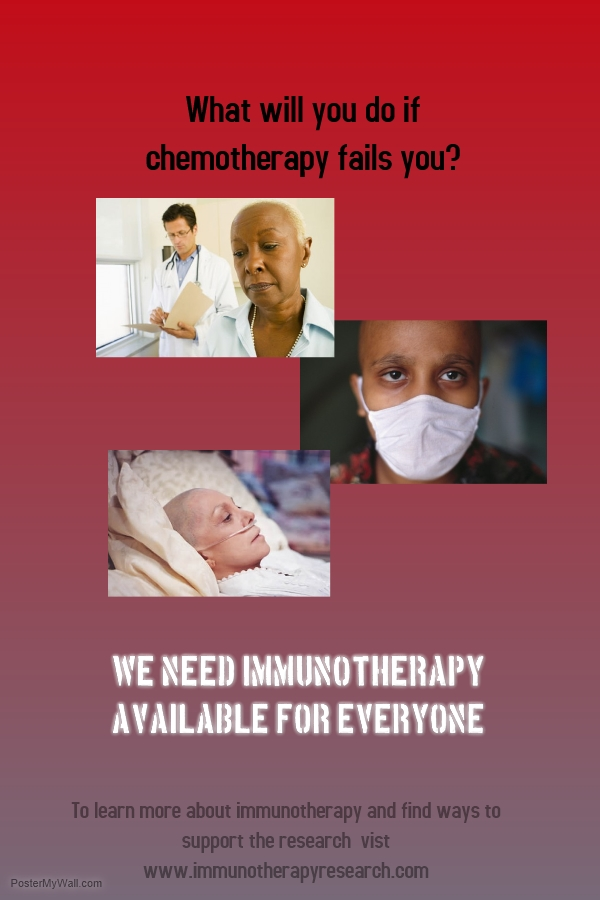
We live in a world where everyone is always scanning their surroundings, trying to read and analyze everything that catches their eye; this is why numerous campaigns are now being focused on visual media. In this post, I will be analyzing the emotions I appealed to and the main message I wanted to convey with my poster. My target audience for this specific project is adults ranging from 30 to 80 years old, and the action I want them to take is to not only become more aware of what immunotherapy is and how it works, but also learn how they can contribute to this ongoing research.
In my poster, I chose to appeal to the audience’s fear of death as well as their reluctance of having an uncertain future to persuade them into taking action.
The first emotion I decided to target is the fear most people have of running out of options to save their life in a scenario where a disease is threatening their life. By doing this, I hoped to get the people reading this poster to reflect and consider what they would do should they be in that position where they desperately want to live but there is no known medicine that can help them.
By using the word “chemotherapy”, I’m implying that the serious disease the poster is referring to is cancer. As we all know, the first course of action that first comes to mind when we think about cancer is chemotherapy, however, the poster is also communicating how chemotherapy does not always work. In the next portion of text, I used a big, severe-looking font that makes the message that much more striking and makes a point that having immunotherapy available to everyone really is crucial and non negotiable. Since I know some people who read the poster may not know what immunotherapy is, right below the big central message I included a smaller announcement to direct the audience to where they can go to get all their questions answered as well as learn more about how to help support and push forward the research of this new technology.
The second emotional aspect I used to get my message to resonate with my audience is their reluctance to be uncertain about where their future will take them. I think it is human nature to want to try and do our best to decipher what the future holds for us and how to best prepare for whatever that might be, however, this poster suggests that cancer patients’ future is uncertain because chemotherapy is not always the answer to their problems. Anyone could become a cancer patient at any point in their life, and I represented that by including images of people with cancer from different age groups and ethnic backgrounds, which makes the poster inclusive to a wide audience. The photos make the patients in them look very distraught and worried which enhances the idea that they are scared because they don’t know what’s coming for them or where their cancer journey will take them now that they have exhausted their options. I don’t think anyone would turn down the opportunity to try to secure better options for their future if given the chance, and my poster is giving the audience the chance to make a positive impact on something that will benefit not only themselves but also millions of other people.
I think the poster helps the audience come full circle because it presents a problem and all the scary effects this problem could possible cause for them, offers a solution to combat these problems and indicates how to make that solution more obtainable.
Images credits:
African American patient:
Patient with mask:
http://www.nature.com/news/india-spurns-cancer-patents-1.13552
Lady laying in bed: